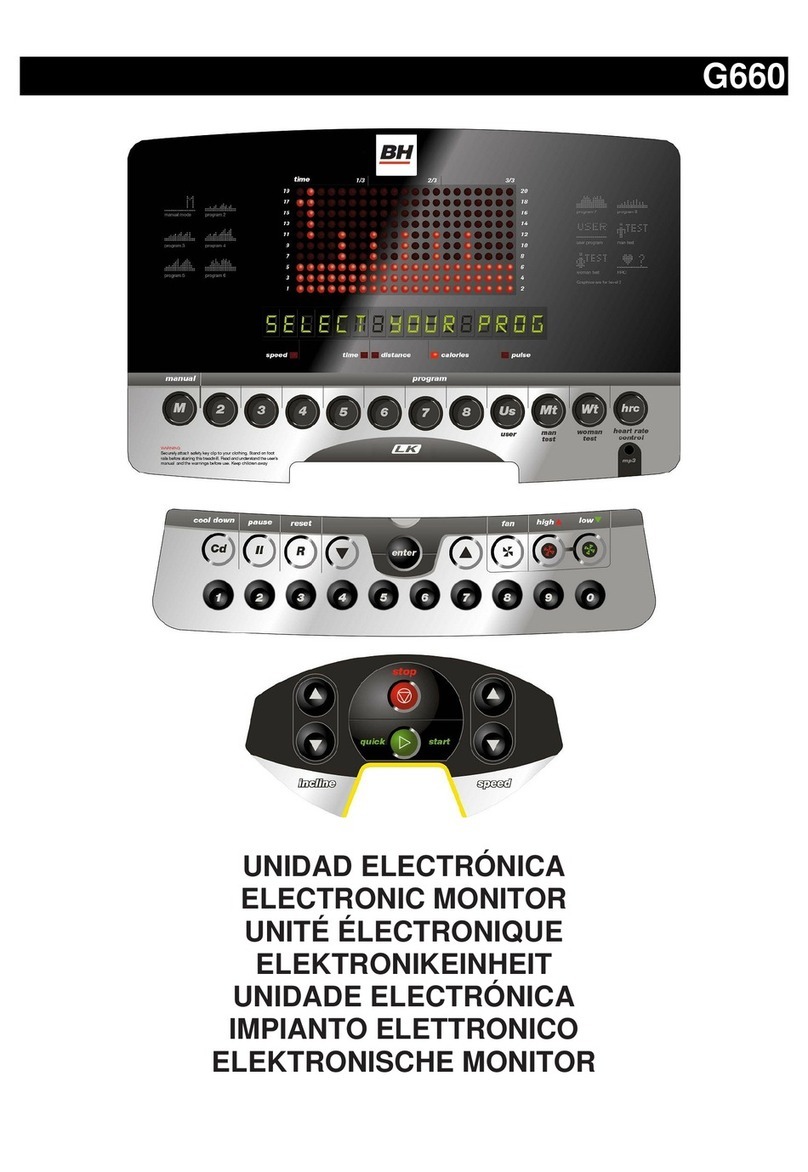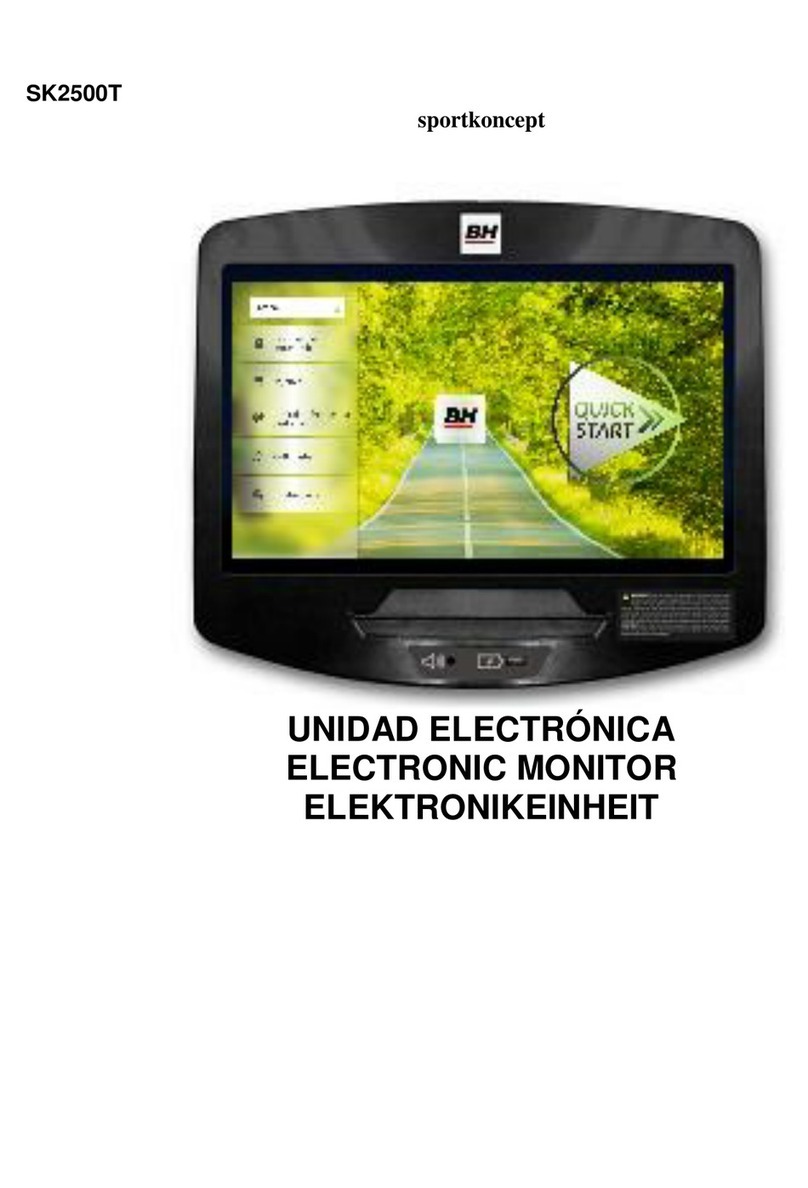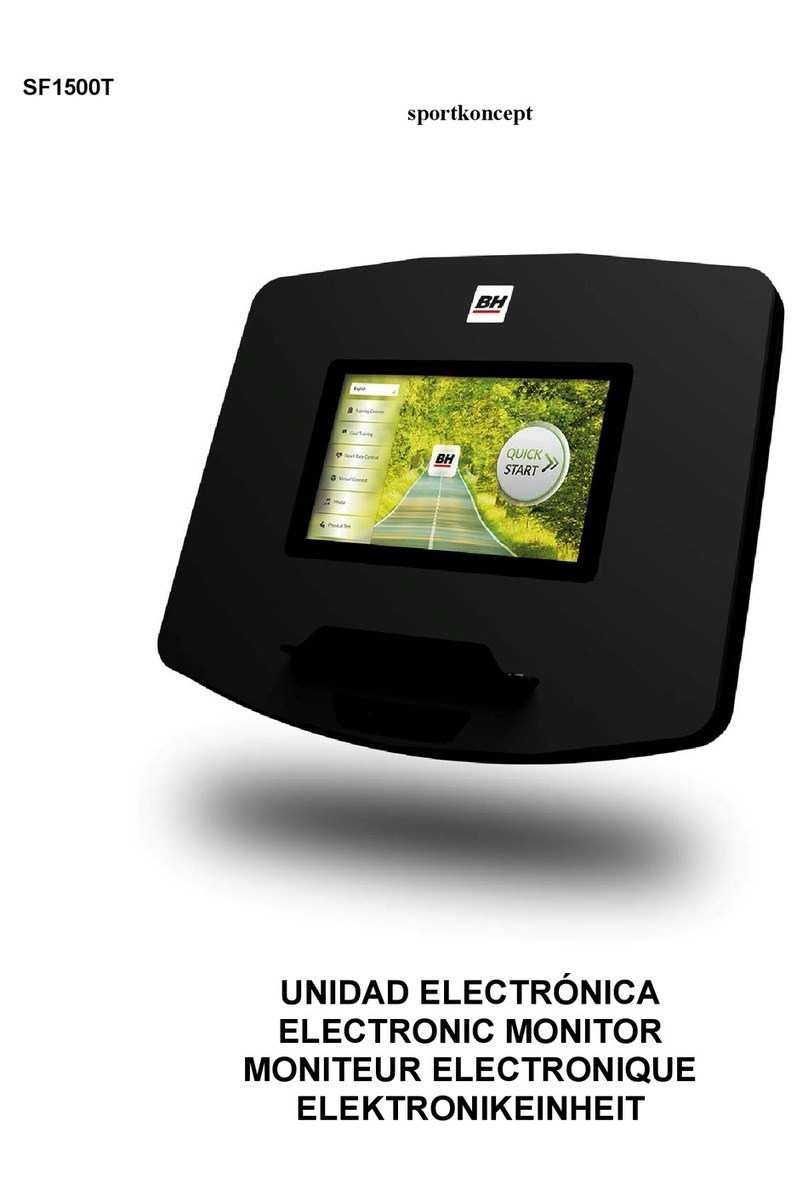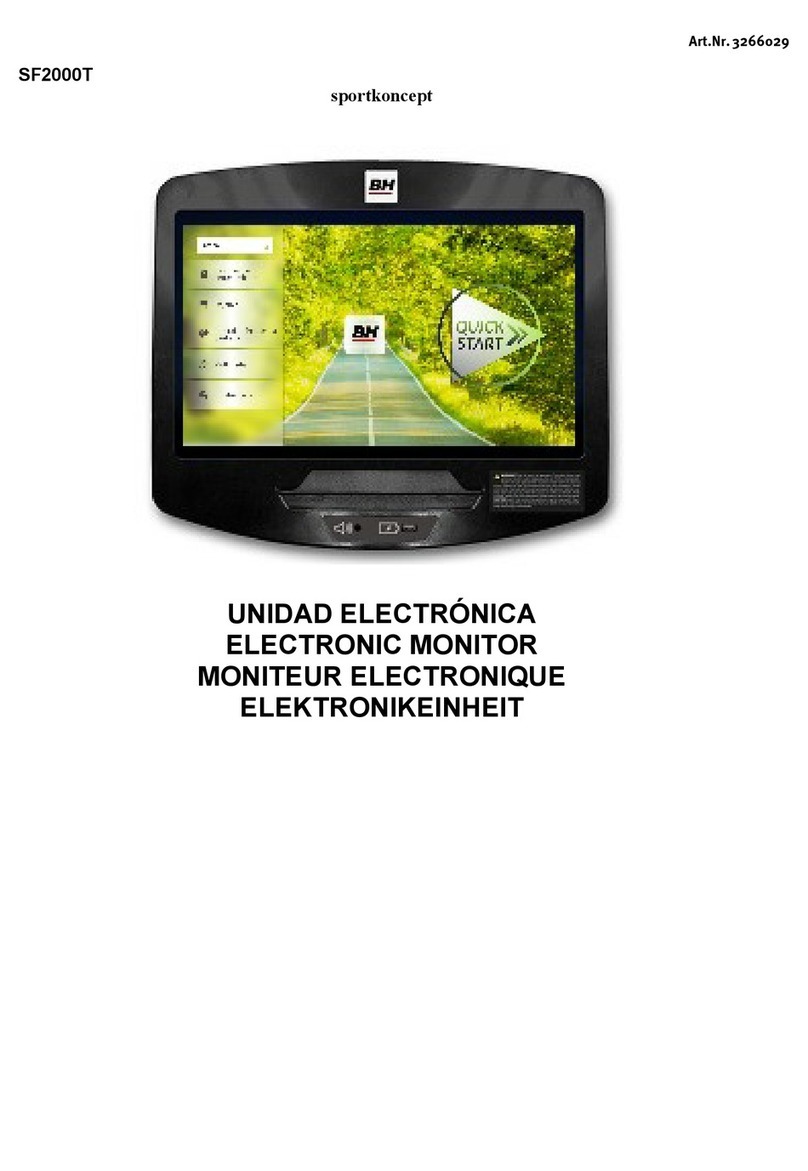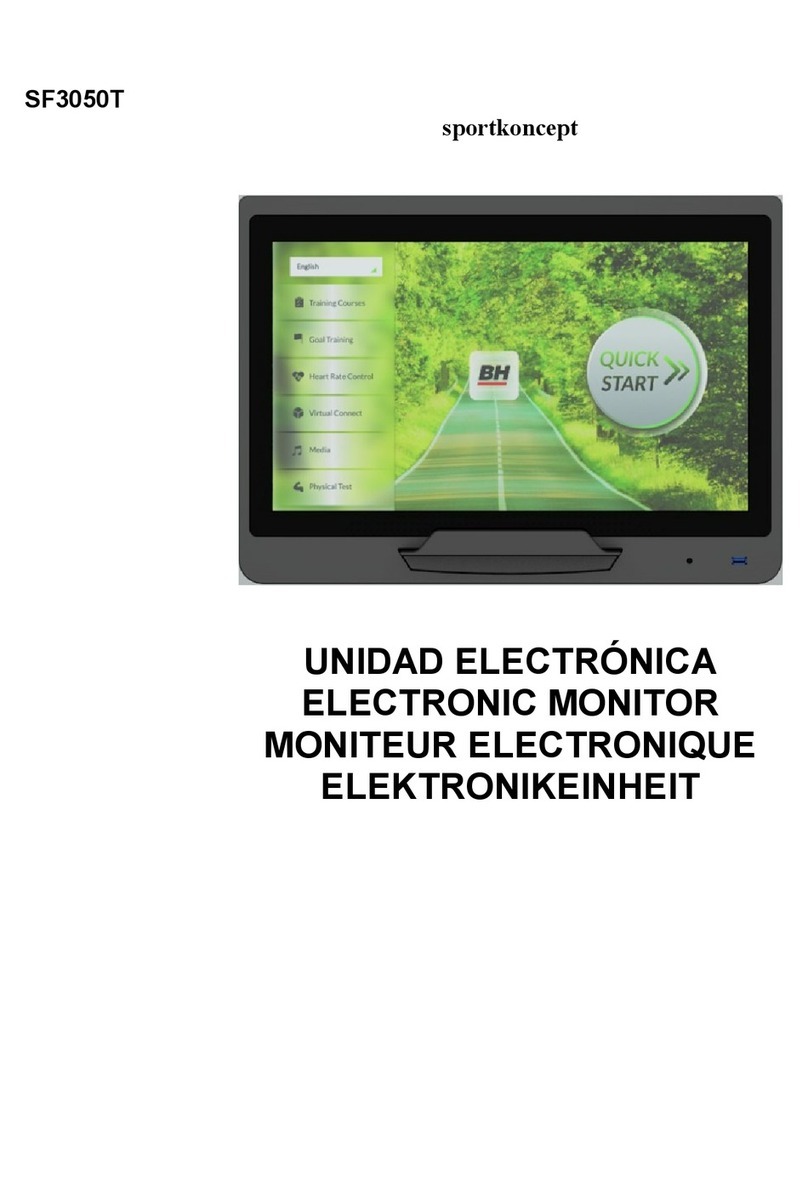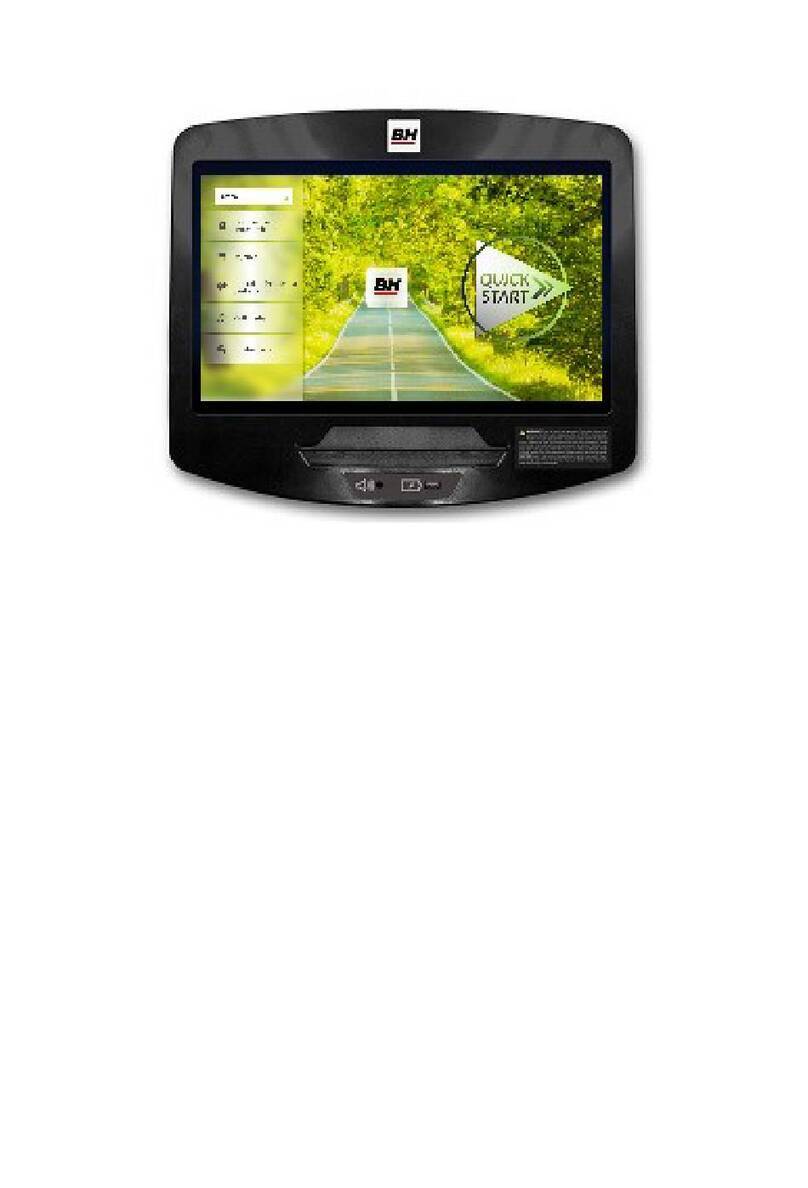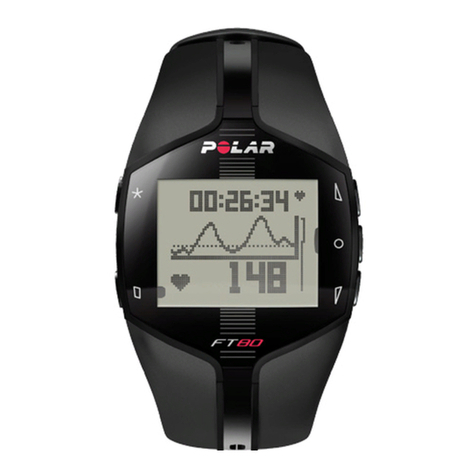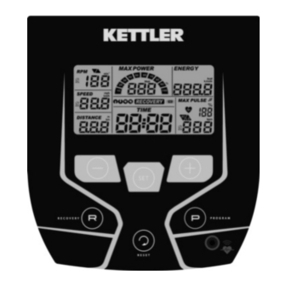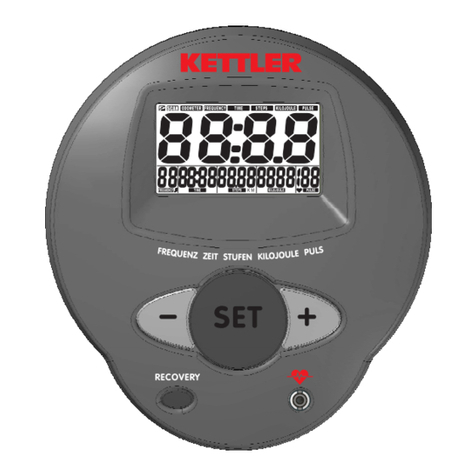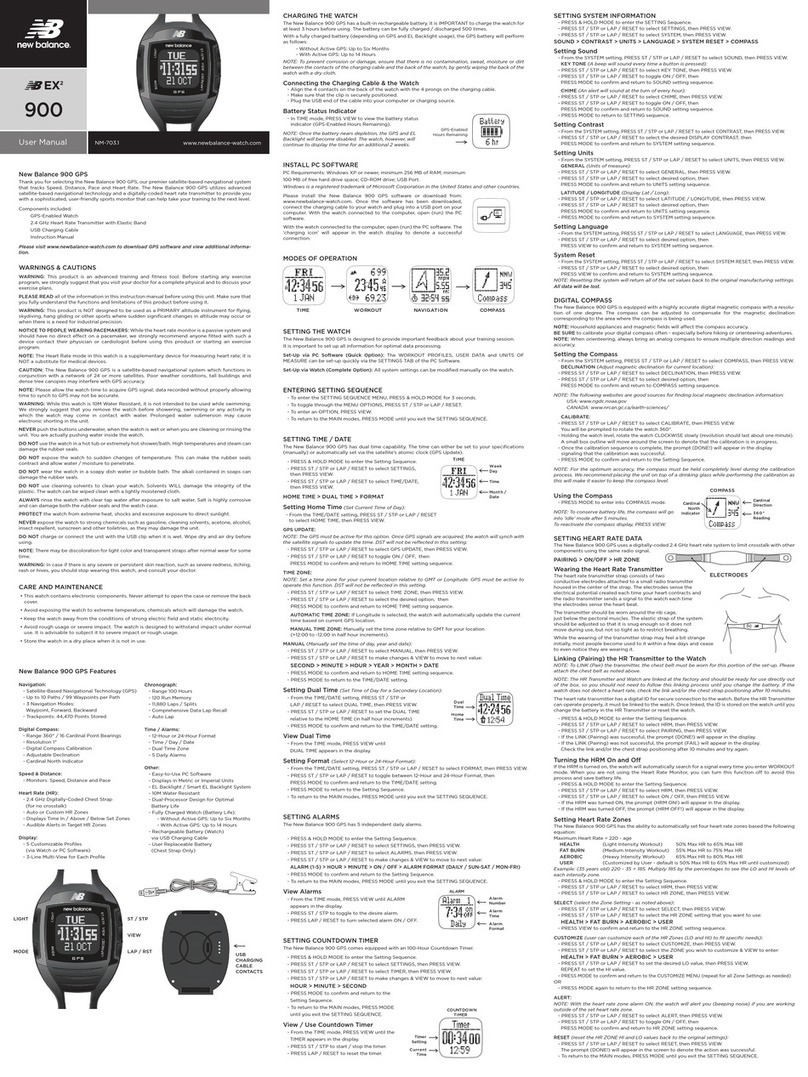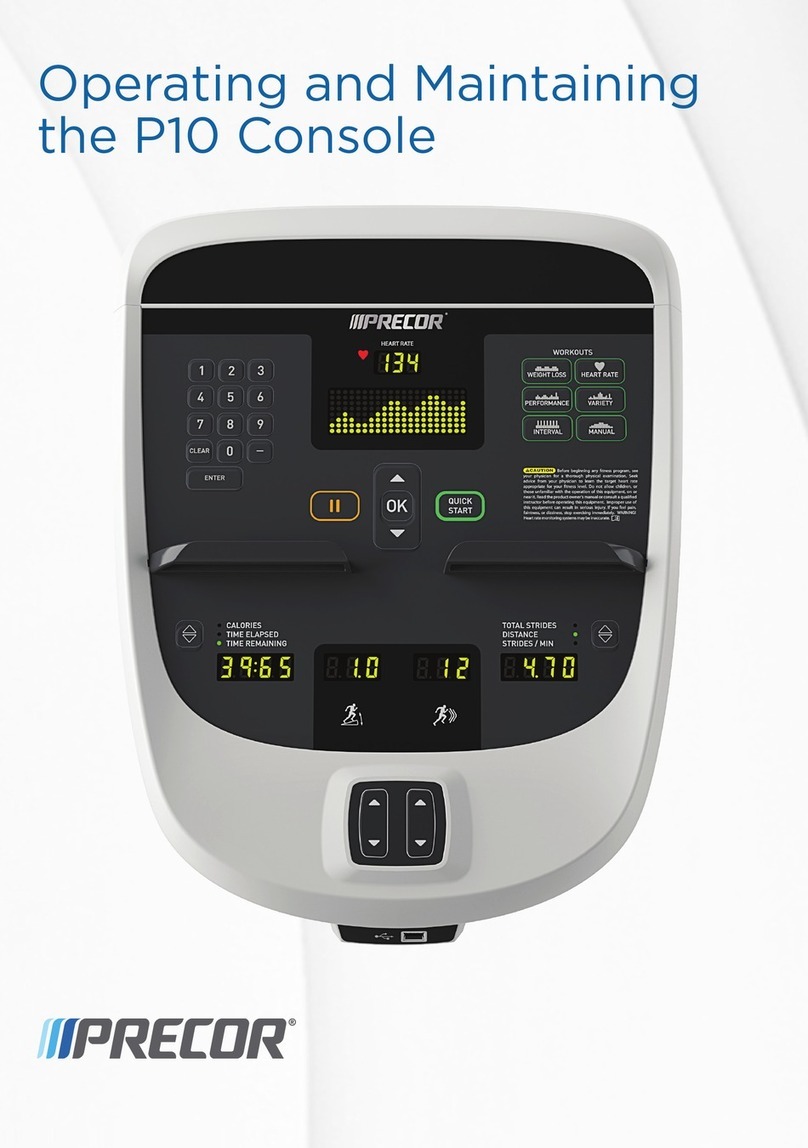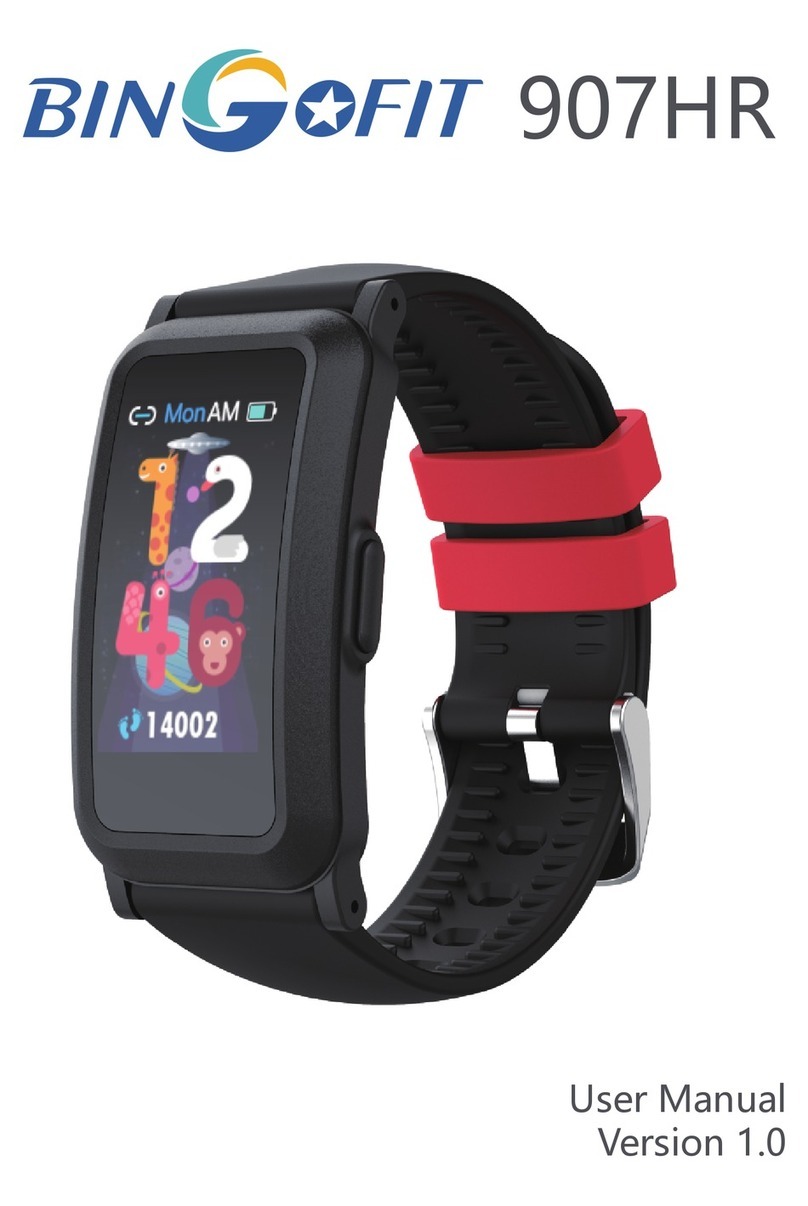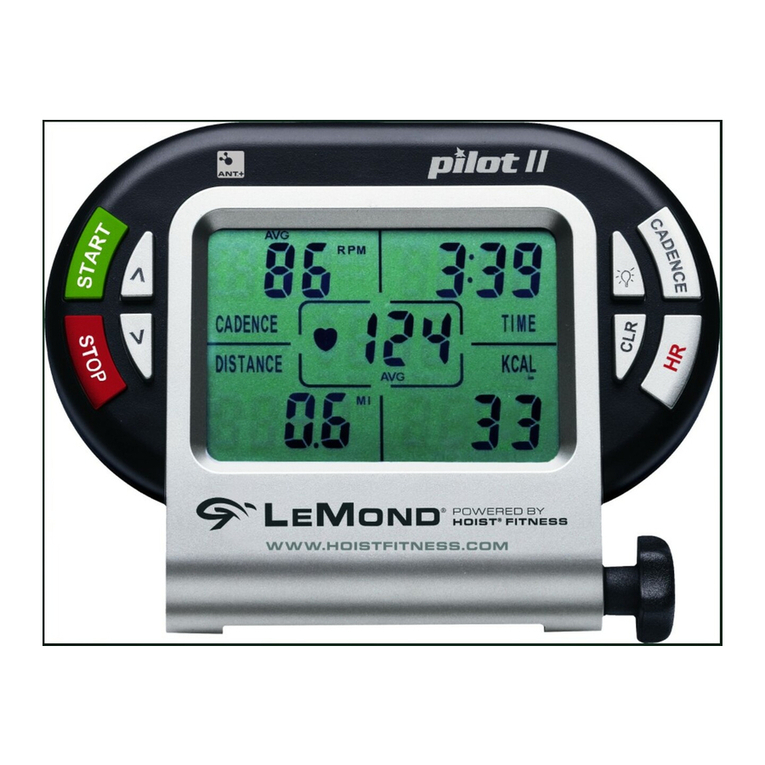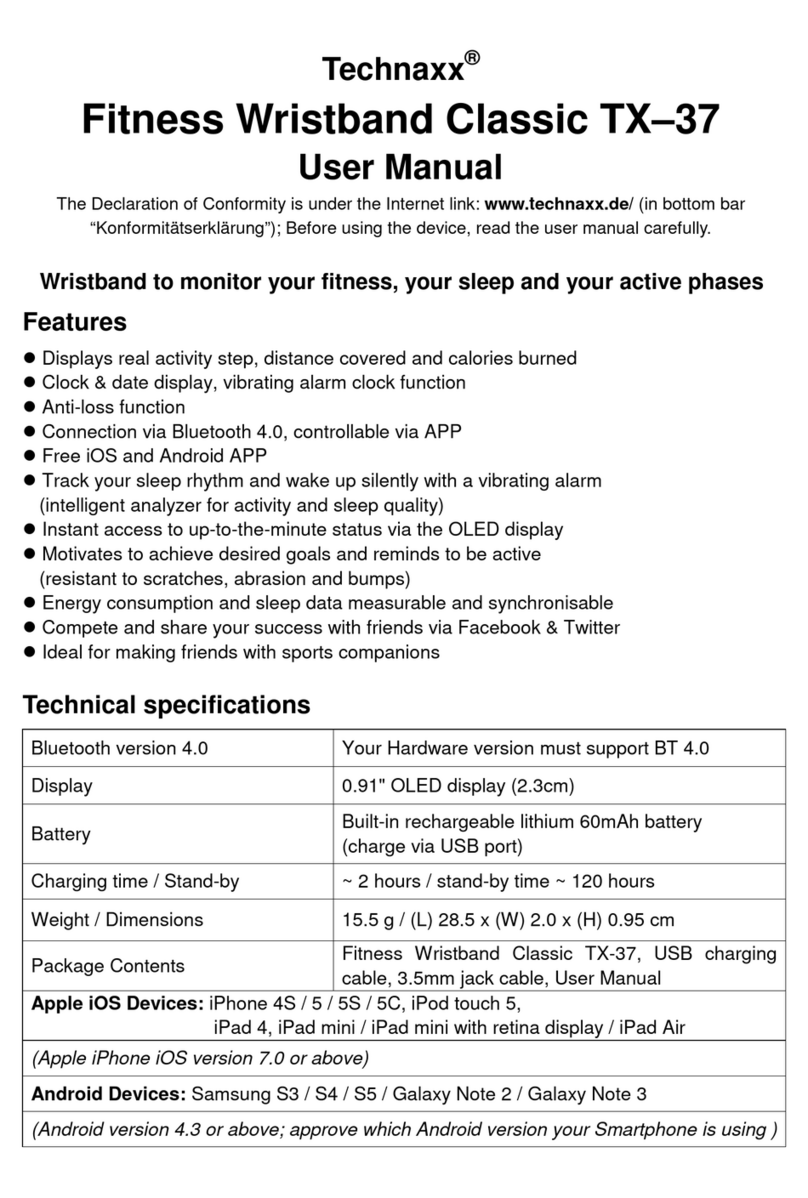
SK2500L SK
LINE
sportkoncept
Los datos que se muestran en los LEDs (C) durante la realización del ejercicio son los siguientes:
-SPEED - VELOCIDAD: Se muestra un valor estimado de la velocidad lineal a la que se desplaza la banda
de la maquina. El valor se muestra en kilómetros por hora (Km/h).
-TIME – TIEMPO: Durante el ejercicio se muestra el tiempo que ha trascurrido desde que comenzamos el
mismo, o, en caso de haber seleccionado un tiempo de ejercicio predefinido, el tiempo que resta para
acabar el ejercicio. El tiempo se muestra en minutos y segundos (mm:ss).
-
DISTANCE – DISTANCIA: Se muestra la distancia que hemos recorrido desde el inicio del ejercicio. La
distancia se calcula teniendo en cuenta la estimación de velocidad lineal (SPEED) y las unidades son los
kilómetros y hectómetros.
-CALORIES – CALORIAS: Se muestra una estimación de las calorías que se han quemado hasta el
momento. La estimación se realiza tomando en cuenta la energía que se está realizando en cada momento
y los datos de peso y
edad introducidos por el usuario.
-INCLINE – INCLINACION: Se muestra el nivel de inclinación que tiene la máquina en cada momento. La
máquina tiene 15 niveles de inclinación (0 a 15). El grado de inclinación se puede cambiar actuando sobre
las teclas INCLINE ▼e INCLINE▲. Al finalizar el ejercicio la máquina vuelve al nivel de inclinación 0.
-PULSE – PULSO: Se muestra la frecuencia cardiaca del usuario, siempre que esta información sea
accesible mediante los sensores de mano ( Hand – Grip )o la banda telemétrica de pecho, cuando se utilizan
los dos juntos, se da prioridad a la banda telemétrica de pecho. Para más información acerca de la
frecuencia cardiaca, consultar la sección: Medida de pulso; banda de pecho y hand-grip.
TECLADO (Fig.3)
.
A continuación se enumera la función de cada tecla.
El monitor electrónico incluye un teclado de uso sencillo. Este teclado consta de las teclas de teclas
numéricas (F) y de las teclas función (G).
- Teclas numéricas (F).- (1- 0) se utilizan para introducir los datos que el monitor solicite.
- Teclas de función (G).- reset; speed-; speed; pause; stop; incline▼; incline▲;quick/start; enter.
Estas teclas se utilizan para seleccionar el ejercicio a realizar, introducir los datos solicitados, controlar el
nivel de resistencia del ejercicio y finalizar el mismo.
-reset.-
Tecla de anulación. Se utiliza para borrar los datos que se introducen en el monitor a la hora de
seleccionar un programa.
-Speed▼
.- Tecla de disminución de velocidad. Durante la realización del ejercicio esta tecla disminuye
en una décima de kilómetro por hora la velocidad de la maquina. Si se mantiene pulsada esta tecla la
velocidad continuara disminuyendo. Durante la selección de los perfiles preprogramados se utiliza para
mostrar en pantalla el perfil anterior al mostrado.
-Speed▲
.- Tecla de incremento de velocidad. Durante la realización del ejercicio está tecla aumenta en
una décima de kilómetro por hora la velocidad de la maquina. Si se mantiene pulsada esta tecla la velocidad
continuara aumentando. Durante la selección de los perfiles preprogramados se utiliza para mostrar en
pantalla el perfil siguiente al mostrado
.
-enter.-
Tecla de selección y validación. Se utiliza durante la selección de un perfil preprogramado para
seleccionarlo, validar los datos que han de introducirse y comenzar el ejercicio. Durante la programación del
perfil de usuario se utiliza además para validar el nivel de esfuerzo correspondiente a cada minuto.
-pause.-
Tecla de pausa. Si se pulsa durante la realización del ejercicio, éste se interrumpe, deteniendo
el cronometro de duración de ejercicio. Para reanudar el cronometro de duración del ejercicio pulse la tecla
pause de nuevo. Si, estando en modo pausa, se pulsa la tecla STOP en ejercicio se dará por finalizado. El
tiempo límite de modo pausa es de cinco minutos, una vez transcurrido este tiempo el ejercicio se dará por
finalizado.
Si, estando en modo pausa, se pulsa la tecla STOP en ejercicio se dará por finalizado.
-stop.-
Tecla de parada. Si se pulsa durante la realización del ejercicio, éste se da por finalizado y la
cinta se para. Se muestra un resumen con los datos del ejercicio y se vuelve a la pantalla de inicio.
